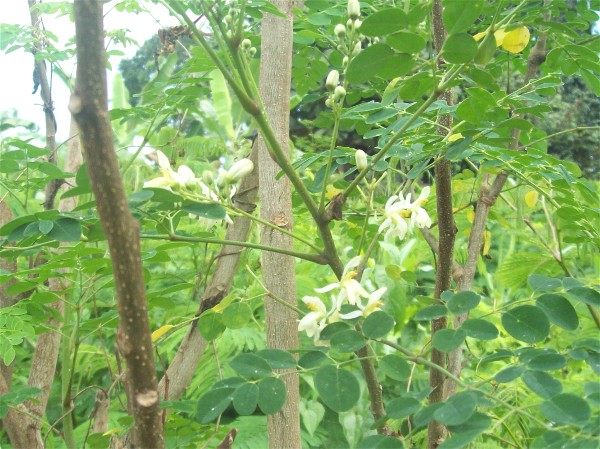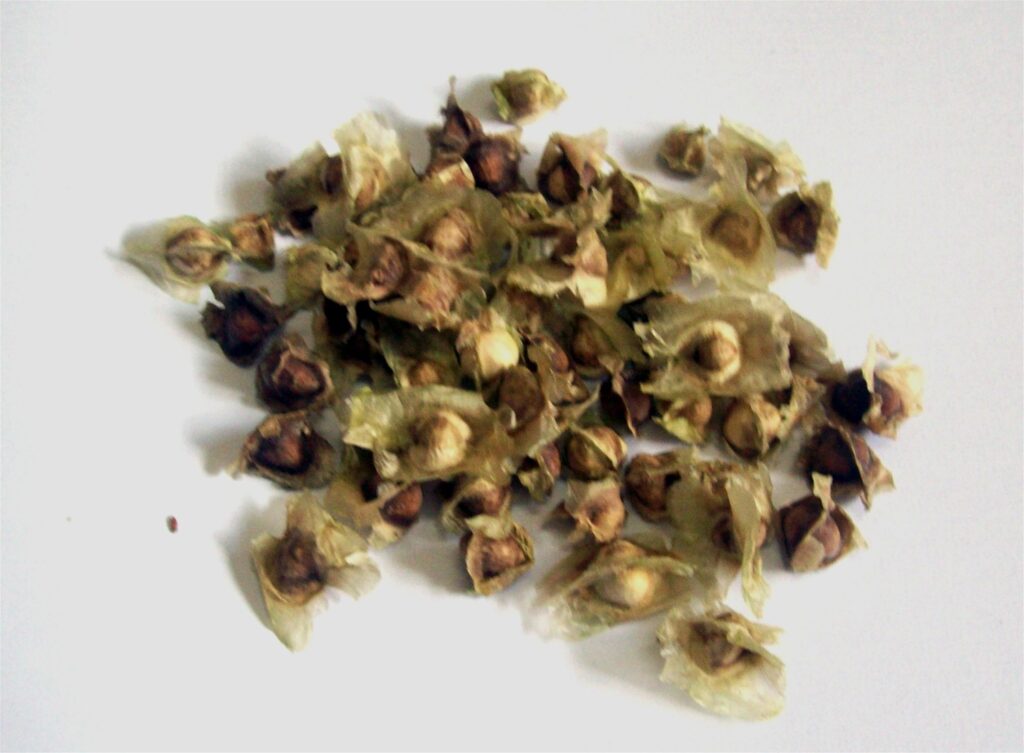Text and Photos by Evangeline T. Capuno
Unknowingly, the Third World War has figuratively commenced. But most people hardly notice the battle as the enemy is stealthy creeping individuals, mostly children from less developed countries. The unseen adversary is malnutrition.
In the Philippines, malnutrition is a major problem. Recent studies showed about 50% of the population suffers from anemia caused by iron deficiency. One in three children has had their growth stunted by malnutrition.
Health experts claim the country suffers from a triple burden of malnutrition together with other forms of undernutrition (including stunting and wasting), micronutrient deficiencies, along with overweight and obesity.
The solution to the problem of malnutrition and hunger lies in the production of Moringa oleifera, locally known as malunggay. The “miracle vegetable,” as some scientists called it, has been promoted by no less than the World Health Organization (WHO) as a low-cost health enhancer in developing countries around the globe. The “natural nutrition for the tropics” is how the Florida-based Education Concerns for Hunger Organization described malunggay.
“We have always had problems with the classical approach to treating malnourished children,” a health official said. “This was based on industrial products: whole milk powder, vegetable oil and sugar. All these things are expensive. When you tell a parent to go out and buy these things – this can be truly costly for him.”
But with malunggay, it’s a different story. “It is locally available and the people themselves can produce it,” the health official added. “We have done experiments in treating malnourished children with this plant and the results have been really spectacular.”
Indeed, malunggay can be used as a weapon against malnutrition. It must be recalled that during the administration of Ferdinand E. Marcos, there was a craze about malunggay as a solution to the malnutrition problem in the countryside. Marcos himself was a malunggay addict, consuming soup littered with green leaves in every meal in addition to the saluyot and labong (bamboo shoots) as his main fare.
Malunggay is so rich in nutrients and vitamins that its image is used as the official logo of the Food and Nutrition Research Institute (FNRI) of the Department of Science and Technology. As one nutritionist puts it: “Malunggay is the symbol of the Filipino fight against malnutrition.”
Nutritionists aver that 100 grams of malunggay leaves yield the following: 75 calories of energy (higher than ampalaya, squash, tomatoes, or carrots), 5.9 grams protein (higher than cauliflower, lettuce, or mustard), 12.8 grams carbohydrate (higher than okra, papaya, or watermelon), 353 milligrams calcium (higher than gabi leaves, mung beans, squash, and camote tops), 3.7 milligrams niacin (higher than other vegetables analyzed). For thiamin, phosphorus, and ascorbic acid, malunggay is at the top of the list.
In addition, nutritionists affirm that 200 grams of malunggay leaves would give a nutritive value roughly equivalent to four eggs and two glasses of milk. Its iron compound prevents deficiency of red blood cells known as anemia. Being a very rich source of calcium, it aids in maintaining healthy bones and teeth.
Malunggay is also rich in vitamin A (higher than red and green mung beans, radish, or eggplant), thus helping prevent xerophthalmia, a disease of the eye. Adults are urged to eat malunggay leaves as its vitamin C content is higher than those of ampalaya leaves. Vitamin C may protect against declining mental ability and stroke. In studies with elderly people, researchers found that low vitamin C levels contributed to shower reasoning skills, which was a strong factor in their dying from stroke.
Filipino women consider malunggay as an ally in nurturing babies. In fact, they dubbed malunggay as their “best friend.” For lactating women, malunggay aids in the production of vitamin-rich milk for the newly born baby. The calcium content of malunggay, nutritionists claim, is four times those found in milk.
Lowell Fuglie, author of Moringa oleifera: Natural Nutrition for the Tropics, shares this bit of information: “For pregnant and breast-feeding women, moringa leaves and pods can do much to preserve the mother’s health and pass on strength to fetus or nursing child. One 100-gram portion of leaves could provide a woman with over a third of her daily need of calcium and give her important quantities of iron, protein, copper, sulfur and B-vitamins.”
For growing children not to be malnourished, they should be served with malunggay, too. “For a child aged 1-3, a 100-gram serving of fresh, cooked leaves would provide all his daily requirements of calcium, about 75% of his iron and half his protein needs, as well as important amounts of potassium, B-vitamins, copper and all the essential amino acids,” Fuglie writes. “As little as 20-gram of leaves would provide a child with all the vitamins A and C he needs.”
More often than not, children don’t like eating malunggay. So, Dr. Riza A. Ramos and her two colleagues, Rosaly V. Manois and Amelia V. Morales decided to supplement the popular rice crackers with malunggay. All three researchers are from the Rice Chemistry and Food Science Division of the Philippine Rice Institute (PhilRice).
They believe that by introducing malunggay into the “junk food,” they can help beat micronutrient deficiencies among children.
Every part of malunggay is nutritious, Dr. Ramos said. So, it is the perfect ingredient to make nutrient-filled rice crackers. She said she drew inspiration for her research from being anemic herself during her preschool years.
Based on their research, the malunggay-supplemented rice crackers have lower total fat content and significantly higher beta-carotene, vitamin C, and calcium levels. These nutrients are essential for growing children.
In Bicol, another study found new ways to integrate malunggay in various preparations as well as package it into different product lines. These include malunggay tea, instant juice, and malunggay powder.
Malunggay leaves are separated from the stalks and are either oven-dried or sun-dried. The dried leaves become malunggay tea. They pounded dried leaves are turned into malunggay powder which can be mixed into common Filipino delicacies such as soups, sauces, instant noodles, cookies, and chocolates as an added ingredient.
“In this way, Filipino children who are not very fond of vegetables get to eat essential nutrients present in malunggay without knowing it,” the Bicol researchers say.
If “an apple a day keeps the doctor away” in the United States, malunggay can be used as such. After all, the malunggay leaves are good for curing headache, bleeding from a shallow cut, and can be used as anti-inflammatory, or cure for gastric ulcers and diarrhea.

“Due to its high vitamins A, C, and E, which are very potent antioxidants, malunggay is a very good quencher of unstable free radicals that can react with and damage molecules that cause aging,” says FNRI’s Dr. Lydia M. Marero. “Antioxidants reduce the appearance of wrinkles and fine lines. They also prevent the onset of various chronic diseases like arthritis, cancer, and heart and kidney diseases.”
When it comes to alternative medicine against diabetes, the drug from ampalaya comes to mind. But Filipino researchers these days are also looking at malunggay. Recent studies have found malunggay extracts can significantly reduce blood sugar in mice. Because of this finding, Irene M. Villaseñor and Juane Marco B. Gonzales were doing studies on the “super plant.”
The two researchers from the University of the Philippines in Diliman took four kilograms of dried malunggay leaves. They had encountered countless obstacles to produce a miniscule amount of pure anti-diabetic compound from malunggay.
The researchers and their team were able to isolate the anti-diabetic compound. “With the help and support from the government and the hard-earned money of the taxpayers, our group managed to isolate an anti-diabetic compound from malunggay leaves,” the two wrote.
The discovered compound, however, is still to be subjected to further tests before it is released in the market for Filipino diabetics in need of less expensive, alternative maintenance drugs. “We still have a long way to go to develop such a drug, but the important thing is, not only have we begun the journey; we have gone a long way,” the two researchers said.
In rural areas, Filipinos without a good source of water can rely on malunggay to purify the water they are drinking. “The crushed moringa seeds can clear very turbid water,” said Dr. John Sutherland, of Leicester University’s Department of Environmental Technology.
By using malunggay seeds, people can get away with using chemicals like aluminum sulphate, which is expensive and poses risks to people and the environment. The seed powder can remove between 90 and 99 percent of bacteria in water.

The oil extracted from matured malunggay seeds is a high value oil that can be used as cooking oil, industrial oil, and ingredient for cosmetics, bath soaps and shampoos, perfume, shortening and lubricants, among others. – ###








